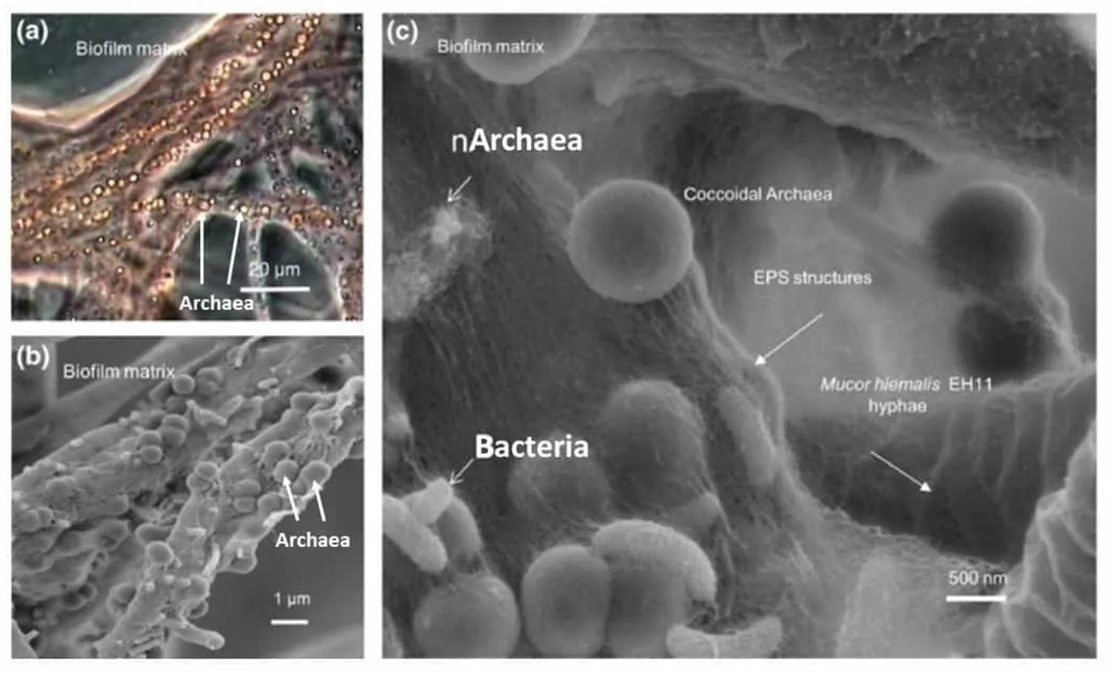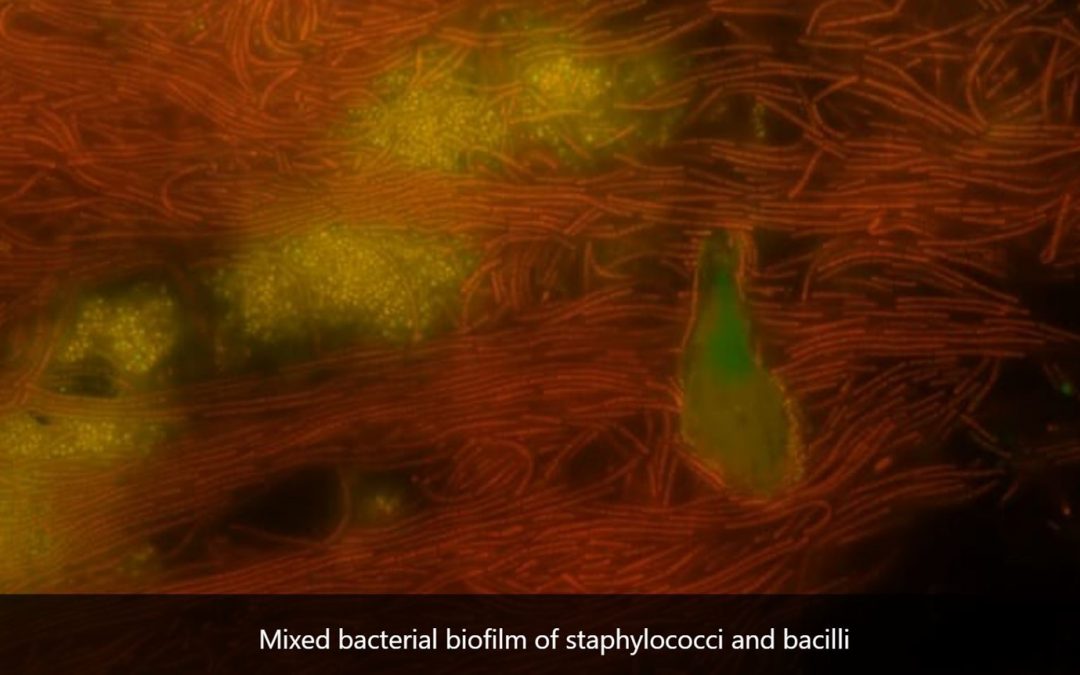It has been estimated that about 80% of bacteria, many yeast/fungal organisms like Candida, algae and other microorganisms can produce this complex, protective coating called biofilms. The various bacteria involved with Lyme’s Disease can produce biofilms making them more evasive and difficult to eliminate. Biofilm production can decrease the effectiveness of antibiotics and other drugs from reaching their targets.
As a matter of fact, within the biofilm itself are different chemicals that neutralize antibiotics and other medications. In the lower layers of many biofilms there are cells called persister cells that develop and pass on antibiotic resistant genetic information. So, many persistent, chronic health problems may be due to biofilms.
Additionally, these organisms especially bacteria can also incorporate blood coagulation products into the biofilm leading to potential problems in the circulatory system of the body.
Health Issues Associated with Biofilms
- Dental plaque, gingivitis, periodontal disease
- Chronic sinusitis
- Digestive issues such as ulcers, leaky gut, SIBO, IBS
- Otitis media – middle ear infections
- Bacterial endocarditis – infection of inner layer of the heart or heart valves
- Infectious kidney stones – many stones mineralize around a small pocket of bacterial biofilms
- Reoccurring, chronic urinary tract infections
- Chronic vaginitis
- Bacterial prostatitis
- Necrotizing fasciitis – an infection that destroys skin and surrounding connective tissue. Can occur with improper wound healing
- Osteomyelitis – deep infection in bone tissue
- Legionnaires disease
- Lyme’s disease
- Cystic Fibrosis
As you can see biofilms can form in many areas of the body such as the skin, mouth, digestive tract, ears, lungs, heart, kidney, bladder, bone, bladder, vagina, prostate and in other parts of the body.
What are Biofilms and How do they Form?
Biofilms are structured and layered barriers of cells in a matrix called extracellular polymer substances (EPS). Generally, the cells make up about 20% of the biofilm and the other 80% are the EPS. It is interesting to note that the cellular make up may not be a single type of bacterium, but several different strains and/or species. Furthermore, some biofilms can contain yeasts, bacteria, or other microorganisms all together!

The EPS usually contains different polysaccharides (complex sugars and starches), fats, proteins, extracellular DNA, metabolites, as well as other signaling molecules. All this is done to protect the different organisms and provide a “safe haven” for them to grow and later spread. It is estimated that some bacterial biofilms are 1,000 times more resistant to antibiotics.
However, it might be worth mentioning at this point many biofilms can form around breast implants, catheters, intravenous lines (IV), artificial heart valves, artificial joints, orthopedic implants, dental implants, pacemakers, endotracheal tubes, and contact lenses. Many medical device companies are busy researching to create devices that prevent biofilm formation.
It is known that biofilms simply begin with free floating, or planktonic, forms of bacteria, yeast, archaea, and other microorganisms. They then attach or adhere to the surface of different tissues. When the population of these bacteria become large enough, an interesting process begins. They start sending chemical messages to each other and begin the process of producing the EPS. This unique process is referred to as quorum sensing (QS). The quorum sensing chemical messengers rapidly spread through the colony of attached organisms and changes in bioelectrical activity can be measured. QS will stimulate the cells in producing the correct amounts of “construction” material and in a specific sequence and structure.
There are specific pathways and layers or “blueprints” that are unique to different biofilms. QS also begins to assign certain cells to be found on the bottom layers, decrease their metabolic activity, and become persister cells. These cells often pass on drug or antibiotic resistance to the next generation once the biofilm disperses new cells. See below:


How to Prevent or Remove Biofilms
This is a very active part of research, particularly trying to find natural therapeutics that can be used safely and in combination with antibiotics and other medications. The basic idea is to find things that can prevent the attachment of the organisms, prevent EPS production, breakdown EPS, prevent quorum sensing, and interfere with growth or changes in the organisms in the biofilm.
A bit of advice is to make sure you have optimal immune system functionality (refer to some of our prior articles on immunity), maintain a balanced microbiome, and clean up your diet. Do not create an environment that encourages bacterial or yeast overgrowth!
Let’s go over some categories of foods and supplements that could help reduce biofilm formation and improve removal.
Enzymes
Help to dissolve biofilms and breakdown their structure. Some enzymes such as bromelain, papain, trypsin, serrapeptase/serratiopeptidase and natto kinase.
Herbals
They have multiple effects on biofilms. Andrographis, berberine, black cumin, Boswellia, cinnamon, citrus extracts, curcumin, gingko, green tea, mangosteen, neem, oolong tea, oregano oil, quercetin, rosemary, and St. John’s wort.
Non-Herbals
Again, have multiple effects on biofilms. Chitosan, colloidal silver, lactoferrin, manganese, monolaurin, N- acetylcysteine (NAC), ozone, certain probiotics, and zinc.
Foods
Apple cider vinegar, cranberry, caprylic acid, garlic, ginger, honey, olive oil, pomegranate, propolis, stevia, and xylitol.
Keep in mind that it can take time to remove biofilms and that there can be several different bacteria and organisms that can contribute to biofilm persistence. Combination of different compounds may be needed as well.
If you are having chronic health issues or have not had complete success in restoring your health, you may have biofilms. It is likely your immune system is compromised, as well. Having a thorough evaluation is a good idea. We can help! Schedule functional medicine appointment today. You can contact my office at (480) 732-0911 and one of my assistants will make an appointment for an evaluation.

